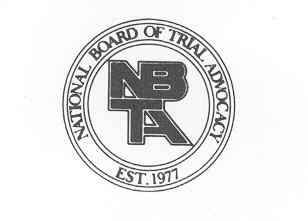In a previous post, we discussed the seriousness of underage drinking and underage DUI in Pennsylvania. There are many ways a qualified Pennsylvania DUI Lawyer can challenge these cases. From a Pennsylvania DUI lawyers point of view, we are concerned at looking at the Government’s case to see whether or not they can prove their case beyond a reasonable doubt. One of the weaknesses in the Government’s case is typically the science.
There are issues with accuracy and variability of the breath test sampling.
One of the major concerns that is present in any underage drinking in Pennsylvania or underage drinking and driving in Pennsylvania has to do with what is called the limit of detection.
As a reminder the illegal level for underage drinking in Pennsylvania is of course, 0.00 BAC or underage drinking and driving in Pennsylvania is 0.02 BAC. These levels are in fact so low, that you can produce a positive result by eating a single slice of bread.
When you are dealing with such low threshold numbers, you can run into a very common type of error in analytical measures whether it be breath or blood which is referred to as “limit of detection” error.
Hyper-technically, the Limit of Detection (LOD) or Detection Limit (DL), is the lowest amount of analyte in a sample that can be detected, but not necessarily quantitated as an exact value. The LOD may be expressed as:
LOD = 3.3 * SD / S
where:
SD = the standard deviation of the response
S = the slope of the calibration curve
Let’s make it simple.
LOD is the lowest quantity of a substance that can be distinguished from the absence of that substance (a blank value) within a stated confidence limit (generally 1%).
I bet that is still not simple enough, let’s try this illustration….
Most measuring devices (otherwise known as analytical instruments) produce a signal even when a blank is analyzed. What this means is that the measuring result of zero really is not zero. Hence, each device has a margin of error that must be accounted for especially when dealing with very low BAC levels (in the case of an underage DUI a .02 can put you at the High Rate penalty tier.
To make it concrete, let’s think about this example. Remember LOD is the lowest value that can be distinguished from zero and LOQ is the limit at which we can reasonably tell the difference between two different values (zero and non-zero). :


- Suppose you are at loud rock concert with your friend with lots of noise from the amplifiers and the band singing and carrying on. If the person next to you, your friend, speaks softly, you will probably not hear your friend. Their voice is less than the LOD. It means nothing to you or you don’t even know about it.
- If your friend speaks a bit louder, you may hear your friend, but it is not possible to be certain of what your friend is saying and there is still a good chance you may not hear your friend. Your friend’s voice is >LOD but <LOQ.
- If your friend speaks even louder, then you can understand your friend and take action on what your friend is saying and there is little chance you will not hear your friend. Your friend’s voice is then >LOD and >LOQ.
- Likewise, your friend’s voice may stay at the same loudness, but the noise from concert may be reduced allowing your friend’s voice to become >LOD. Detection limits are dependent on both the signal intensity (voice) and the noise (concert).
- But where it becomes dangerous and alarming is when you are at the concert and you hear the drummer who is part of the band and hence the noise and mistake it for your friend because both are really close to one another creating confusion of one for the other.
At a 0.00 or a 0.02 very low level, the last scenario of the bullet points above becomes a very real problem.
Just because we can tell something from noise does not mean that we can necessarily know how much of the material is actually there. The Limit of Quantification (LOQ) is the limit at which we can reasonably tell the difference between two different values (zero and non-zero). The LOQ is drastically different between different measuring devices (e.g., breath versus blood) or between different types of the same type of measuring device (e.g., not all breath test devices are the same Intoxilyzer 5000 versus BAC DataMaster) and even between different types of the same model of testing device (e.g., Intoxilyzer 5000 EN serial number 68-0012345 versus Intoxilyzer 5000 EN serial number 68-0012346).
As we can see, having the right attorney who knows these sources of error can make all of the difference in an underage drinking in Pennsylvania or underage drinking and driving in Pennsylvania. If you or someone you know is facing underage drinking or DUI charges in Pennsylvania, you should call The McShane Firm immediately. We maintain a 24 hour hot-line so you can talk to someone who can answer your questions at any time. The number is 1-866-MCSHANE.
-Justin J. McShane, Esquire, Pennsylvania DUI Attorney
I am the highest rated DUI Attorney in PA as Rated by Avvo.com
You can follow me on Twitter, Facebook or Linkedin

Board Certified Criminal Trial Advocate
By the National Board of Trial Advocacy
A Pennsylvania Supreme Court Approved Agency
One response to “Underage Drinking and DUI in Pennsylvania: LOD and LOQ Defense”